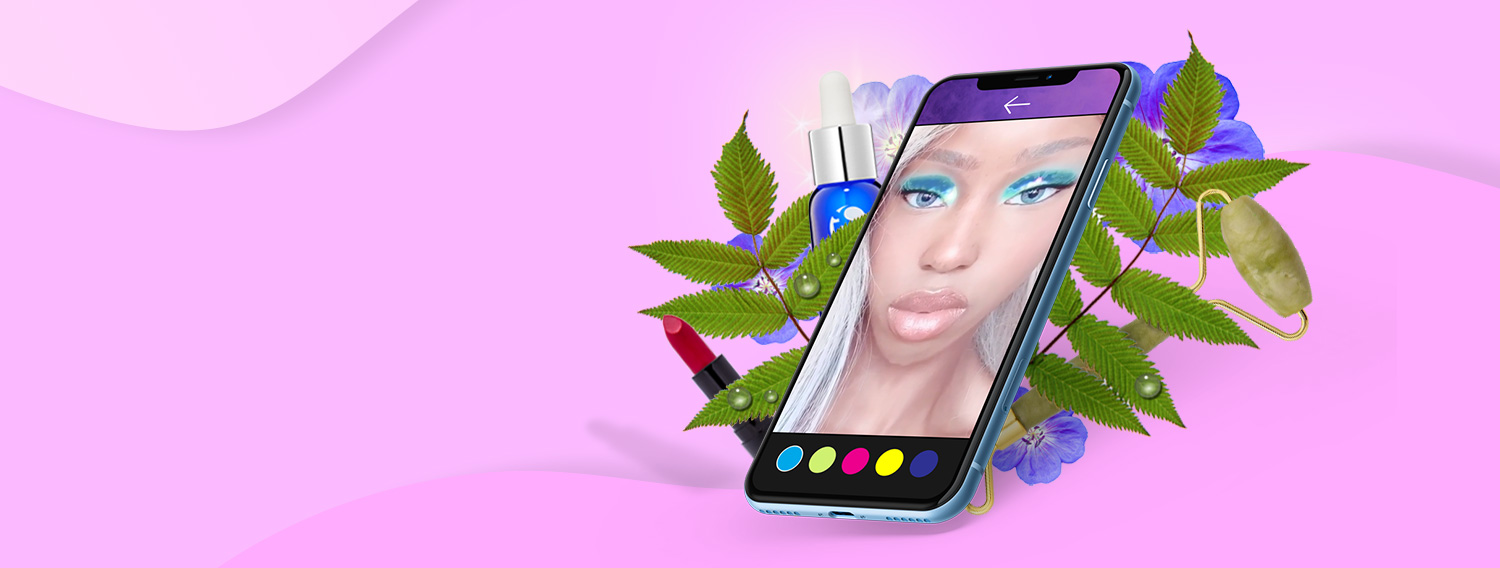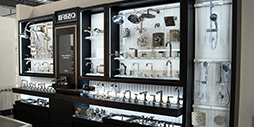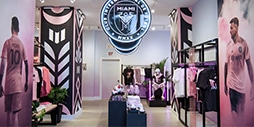2020 has been a pivotal year for the health and beauty industry. COVID-19 has been a huge disruptor with the current situation predicted to cause a 20-35% revenue decrease for 2020. However, pre-COVID, 85% of beauty-product purchases were made in-store across all age groups, even by Gen Z and Millennials, who did 60% of their shopping in bricks-and- mortar stores. This coupled with the fact that 89% of consumers believe their routines will return to normal within 2+ months shows that despite the impact of lockdown, the high-street looks set for a swift recovery.
COVID-19 has actually acted as an industry reformer – accelerating and galvanising many pre-existing shifts, whilst creating demand for safe shopping technologies, like heat mapping, touchless temperature screening, voice experience activation and UV light sanitation. It has also renewed interest in older device-led tech like the QR code and motion sensors. Among the most prevalent pre-existing trends are an increase of the conscious consumer (particularly surrounding sustainability and inclusion); the amalgamation of the beauty and wellness categories; and the emergence/growth of new technology. All of which being set against a backdrop of fears surrounding social distancing and hygiene – thus accelerating the need for all-encompassing touchless technology.
Sustainability has been gaining momentum for some time. From 2018 to 2019, there was a 100% increase in hashtag mentions, such as “#wastefulpackaging” and keyword phrases like “too much packaging”, while beauty- specific posts containing phrases such as “eco-friendliness” and “sustainability” increased by 25%. Despite the overuse of single-use plastics during the pandemic, the ideology is still there. Therefore, alternative solutions like automatic motion activated hand sanitiser stations will quell fears of pathogen transfer enough to see this reduced.
The increase in inclusive beauty was already set to be a global trend for 2020, with the emergence of companies like The Waterless Brand and Afrocenchix, and larger brands like Mented Cosmetics making inclusion a key part of their proposition. This has been accelerated by the global BLM demonstrations and has presented fresh scrutiny to brands from foods to pharmaceuticals, transforming inclusivity from trend to requirement. Therefore, failure to cater to all ethnicities and ages could lose permanent consumers.
Another key trend is the amalgamation of the beauty and wellness industries, which represents a shift in focus from treating the symptoms of skin issues (i.e. with make-up), to remedying the underlying problems, with personalised vitamins and probiotics, cosmetic treatments like lip augmentation and a new science-led approach using personalised DNA skin testing and microbial genomics. Research from The Hartman Group has shown that for the first time in 10 years, weight management has been replaced by mental illness as America’s top health concern. Indicating the move away from health and beauty that is only skin deep.
All of the above have been assisted with the largest industry trend: the rise of tech. An inability to try on products whilst in lockdown and the hygiene fear factor of direct product handling has led to consumer desire for more innovation in-store – specifically touchless technology. Our research has shown that post lockdown 43% of consumers want to see voice activation in-store, 33% want motion sensor technology and a whopping 67% want self-checkout facilities. This will impact the entire shopping process, leading to a new safety focused shopper journey, from entrance and product engagement through to point of sale. Temperature readers have been widely accepted and introduced by many retailers as a safe way of policing the virus. Here at Outform we recognised this global demand and created our completely touch-less iDISPLAY temperature reader.
Throughout the consumer journey AI and AR are becoming ever more important, particularly where experience in-store is concerned. This is something we realised in our interactive experience collection, for GlobalShop 2019, where we presented a virtual lipstick try-on which utilised both AR and RFID. During lockdown the ‘virtual try-on’ soared, with Estée Lauder’s lipstick try-on increasing by a whopping 133% and MAC’s consumer engagement increasing three-fold in. In-store, AR try-ons are being implemented through AR smart mirrors, like HiMirror, Mirror and the Magic Mirror already being installed in Harrods, which will allow shoppers to try on the full range of makeup available without the need for testers.
Here at Outform we continuously strive to innovate and overcome challenges, by providing insight, cutting-edge tech and creative in-store solutions, inspired by the latest advancements in technology and design.
Together we shape the future of retail.
Want more industry news? Click here to sign up for our weekly newsletter and receive the latest news in tech, innovation, design and retail right in your inbox.


